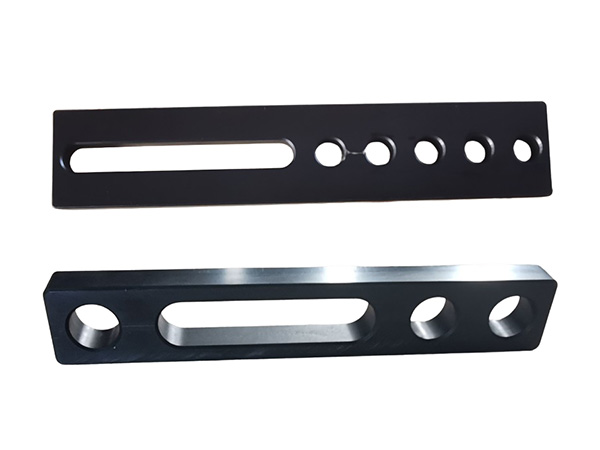- 网站导航 -
Address: Home > News > Technical documentation >
Guide to Selecting and Using Welding Fixtures: A Comprehensive Guide to Improving Welding Quality and Efficiency
Time:2024-09-15 11:04:58 Author:Fadetong Clicks:70Second-rate
Introduction
Welding fixtures play a critical role in welding operations, ensuring accurate positioning of welding components and significantly enhancing welding quality and production efficiency. However, selecting and using welding fixtures involves multiple considerations. This article provides a comprehensive guide on selecting and using welding fixtures to help you make informed decisions, optimize the welding process, and boost production effectiveness.

1. Guide to Selecting Welding Fixtures
1.1. Clarify Welding Requirements
Before selecting welding fixtures, clearly define your welding needs, including the type, size, weight, and welding process of the workpieces. Understanding these requirements will help you choose the appropriate type of fixture. For instance, heavy-duty fixtures are needed for large or heavy workpieces, while high-precision fixtures are required for detailed welding tasks.
1.2. Choose the Right Fixture Type
Welding fixtures come in various types, including fixed fixtures, adjustable fixtures, and automatic fixtures. Fixed fixtures are suitable for standardized production lines, while adjustable fixtures are ideal for frequently changing workpieces. Automatic fixtures enhance operational efficiency by reducing manual intervention. Selecting the right type of fixture based on your production environment and welding tasks will improve efficiency and quality.
1.3. Consider Materials and Durability
The material of the welding fixture directly affects its durability and performance. Common materials include steel, stainless steel, and aluminum alloy. Steel fixtures offer high strength and load-bearing capacity for heavy-duty tasks. Stainless steel fixtures provide excellent corrosion resistance, while aluminum alloy fixtures are lighter and suitable for mobile operations. Choosing the right material ensures stability and longevity under various working conditions.
1.4. Evaluate Functionality and Configuration
Modern welding fixtures often come with various features such as adjustable clamping devices, integrated positioning systems, and automatic clamping functions. These features can enhance welding precision and ease of use. Assess whether the fixture's functions meet your production needs, such as quick adjustment and clamping capabilities or high-precision positioning systems.
1.5. Select a Reliable Supplier
Choosing a reputable supplier is crucial for ensuring the quality and performance of welding fixtures. Evaluate the supplier’s market reputation, customer reviews, and after-sales service. Opting for experienced suppliers who offer excellent support will help you acquire high-performance welding fixtures.
2. Tips for Using Welding Fixtures
2.1. Proper Installation and Adjustment
Correct installation and adjustment of welding fixtures are fundamental to ensuring precision and efficiency. Follow the manufacturer's installation guidelines to ensure all components are secure and accurately aligned. Regularly check and adjust fixtures to maintain optimal performance during welding.
2.2. Regular Maintenance and Care
To maintain the best performance of welding fixtures, regular maintenance and care are essential. Clean welding residue from the fixtures, check for wear and tear, and promptly repair or replace damaged parts. Regular upkeep extends the fixture's lifespan and reduces the likelihood of malfunctions.
2.3. Train Operators
The skill and experience of operators significantly impact the effectiveness of welding fixtures. Provide appropriate training and guidance to ensure operators can use fixtures correctly and fully utilize their functions. Training should cover installation, adjustment, maintenance, and safety protocols.
2.4. Optimize Fixture Configuration
Optimize the configuration and layout of fixtures based on production needs. For example, in multi-station production lines, strategically configuring fixtures can reduce workpiece handling time and improve efficiency. Modular fixtures offer flexibility to adjust and configure for various welding tasks.
2.5. Record and Analyze Usage Data
Record usage data and key indicators from the production process to analyze fixture performance and efficiency. This data can help identify potential issues, optimize fixture use, and further enhance production effectiveness.
3. Return on Investment for Welding Fixtures
3.1. Enhanced Welding Precision
High-quality welding fixtures significantly improve welding precision, reducing defects and enhancing overall product quality. This directly affects market competitiveness and customer satisfaction.
3.2. Increased Production Efficiency
Choosing the right fixture type and configuration can streamline production processes, increase efficiency, reduce workpiece handling and adjustment time, and lower production costs.
3.3. Reduced Maintenance Costs
Durable and easy-to-maintain fixtures decrease the frequency of faults and repairs, thereby lowering long-term maintenance costs. Investing in high-quality fixtures offers better returns for your production line.
3.4. Improved Production Flexibility
Modular and adjustable fixture designs enhance production line flexibility, allowing quick adaptation to different welding tasks and market changes. This increases adaptability and efficiency, meeting diverse production needs.
Conclusion
Welding fixtures play a crucial role in welding operations, directly impacting welding quality and production efficiency. By following the selection guide and using tips provided, you can significantly improve welding performance and overall production line effectiveness. Investing in high-quality welding fixtures will deliver greater precision, efficiency, and long-term returns. If you are seeking solutions to enhance welding efficiency and quality, choosing our premium welding fixture products will be your ideal choice. Contact us today to learn more about our welding fixture solutions and inject new vitality and efficiency into your production line!











